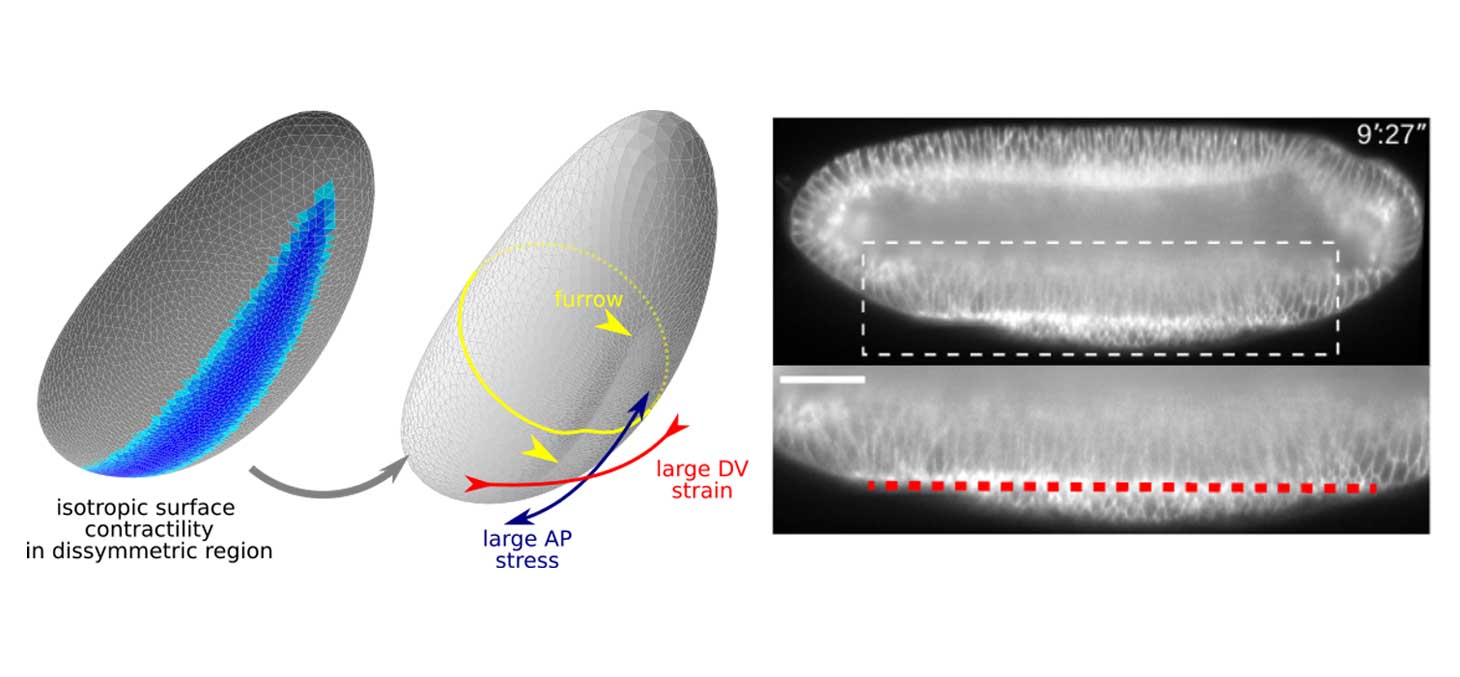- Share
- Share on Facebook
- Share on X
- Share on LinkedIn
Research, Recruitment

Folding oneself into shape: a buckling of epithelial tissue. Morphogenesis is the genetically-controlled process through which organisms acquire a shape. Here we show that in the Drosophila embryo, the formation of the ventral furrow corresponds to a buckling under tension of the curved ventral tissue.
The epithelial shape changes driving morphogenesis result from internal mechanical forces arising from the cellular cytoskeleton. The actomyosin network is a cellular cytoskeletal component capable to exert contraction stresses. Cellular actomyosin stresses can eventually be integrated at the scale of a tissue or of the entire organism through cell–cell adhesions. During early Drosophila embryo development, the actomyosin network is known to play a key role in the folding of the prospective mesoderm by forming a furrow on the ventral side of the embryo. Here, we show that actomyosin contractility at the embryo surface works like a ‘cheese-wire’ indenting the surface in a rectilinear fold after a buckling event.
Contact
Internship DIrectors
Jocelyn Étienne
Office 314
jocelyn.etienne univ-grenoble-alpes.fr (jocelyn[dot]etienne[at]univ-grenoble-alpes[dot]fr)
univ-grenoble-alpes.fr (jocelyn[dot]etienne[at]univ-grenoble-alpes[dot]fr)
Tel : +33 476 514 427
Catherine Quilliet
Office 331
catherine.quilliet univ-grenoble-alpes.fr (catherine[dot]quilliet[at]univ-grenoble-alpes[dot]fr)
univ-grenoble-alpes.fr (catherine[dot]quilliet[at]univ-grenoble-alpes[dot]fr)
Tel : +33 476 514 812
Collaboration
l'Institut de Biologie Valrose,
Nice.
More information
- Share
- Share on Facebook
- Share on X
- Share on LinkedIn